For the past two years I?ve been reading about, listening to and researching the ye-yé scene in Spain. This videoplaylist will lead you through some aspects of 60s youth culture, particularly some of its clashes with the society that it developed in, under Franco?s dictatorship.
-

40 grados a la sombra (Mariano Ozores, 1967)
-

Los chicos con las chicas (Javier Aguirre, 1967)
-

Los chicos del preu (Pedro Lazaga, 1967)
-

Pero en qué país vivimos (José Luis Sáenz de Heredia, 1967)
-
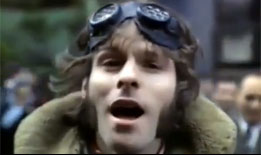
Un, dos, tres, al escondite inglés (Iván Zulueta, 1969)
-
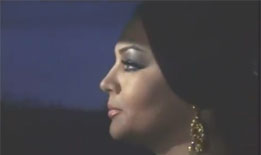
Tuset Street (Luis Marquina, Jorge Grau, 1967)
-
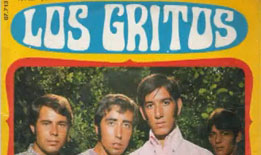
Los gritos, ?Yo en mi casa y ella en el bar?
-
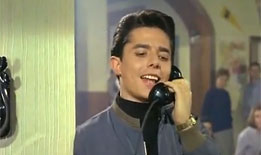
Acompáñame (Luis César Amadori, 1966)
-
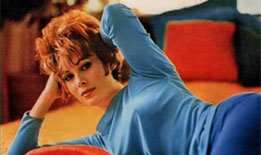
Los Bohemios ?Qué chica tan formal?
-
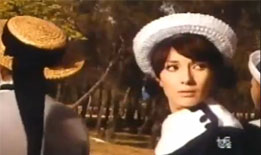
Los chicos con las chicas (Javier Aguirre, 1967)
40 grados a la sombra (Mariano Ozores, 1967)
Spain joined the consumer society in the sixties, but modern habits and fashions, particularly in coastal areas, were introduced by a huge operation orchestrated and blessed by the Ministry of Information and Tourism, which irreversibly changed the summer landscape of our beaches and cities. The locals adapted as best they could to the skimpy clothing and more uninhibited behaviour of the tourists. In this excerpt, a couple has trouble putting on their bathing suits as they modestly conceal the process of undressing.
Los chicos con las chicas (Javier Aguirre, 1967)
While they avoid fulfilling the obligations their manager has lined up for them, Los Bravos come across an excursion of young lady boarders from a nearby school. The boarding school, run by a director who protects her girls from the dangers of the outside world and the wickedness of the male gender, strictly enforces the rules set by the school?s philanthropist founder. Mike Kennedy takes a liking to one of the boarders and manages to sneak in pretending to be a music teacher to woo her. The boarding school is run along similar lines to a convent, but the girls manage to evade the strict rules thanks to music ? in this scene we hear the Los Bravos track ?You?ll Never Get the Chance Again?.
Los chicos del preu (Pedro Lazaga, 1967)
In Spain, being modern meant being ye-yé. It didn?t matter if you liked rock?n?roll, mod, beatnik? you were ye-yé, that?s all there was to it. Music as a pastime, clothes and wearing your hair long were the individual and generational expressions of young people in the sixties. Being a musician meant being a little more free, less constrained, taking a different path to your parents, often with the family conflict that goes with it. In those years, hundreds of bands popped up in cities and towns, groups of friends who saved up to buy a guitar or a drum kit and sometimes managed to record an album and make it as professional musicians.
Pero en qué país vivimos (José Luis Sáenz de Heredia, 1967)
As pop music and the influence of the English-speaking world gained ground among young people, the rest of society accepted it and made fun of it, stripping it of some of its power. These excerpts show a confrontation between tradition (Manolo Escobar) and the modern world (Concha Velasco) by way of a quiz. The street has its say, Spanish ballads or ye-yé? Our own culture, or foreign style? Political forces, concerned about public order, saw the longhaired ye-yés as a potential threat that had to be kept under control.
Un, dos, tres, al escondite inglés (Iván Zulueta, 1969)
In the middle of Gran Vía in downtown Madrid, the British group The End singing ?Cardboard Watch? stood out for the way their unusual look. Their clothes, their height, and particularly their hairstyles amazed passers-by. Long hair was an obsession for enemies of the new fads, who claimed that it showed a lack of hygiene and masculinity, unsuitable for decent individuals. Newspapers were full of jokes at their expense, and hair ended up becoming a commonplace.
Tuset Street (Luis Marquina, Jorge Grau, 1967)
Tuset Street is a love story between an architect from Barcelona?s gauche divine and a dancer from El Molino cabaret. Their relationship shows the clash between two worlds, the bourgeois intellectuals and the working-class riff raff. They are both presented symbolically as a reflection of two socio-political realities, one that identifies with the lower middleclass mass of ?sociological Francoism? (the target audience of the actress Sara Montiel), and the other with an elitist, intellectualised anti-Francoism (the Barcelona School and the gauche divine). The shoot ended in disaster, and its director, Jorge Grau, was replaced by Luis Marquina at the request of the star and producer, Sara Montiel.
I highly recommend watching the whole film, but if you don?t have time, a key scene is the one with the band, when the protagonist has an epiphany and realises that the modern façade of Tuset Street is just a mirage. (1:22:15)
Los gritos, ?Yo en mi casa y ella en el bar?
Extra
With these videos, I?m more interested in the lyrics than the images. Ye-yé girls have to be modern but, careful! Above all they have to be respectable.
What can I do if that?s the way she is?/ I hooked up with a hippy chick / I?ve never seen anything like this before / I?m here at home and she?s in the bar...
Acompáñame (Luis César Amadori, 1966)
In ?Acompáñame? (Luis César Amadori, 1966), Mexican rocker Enrique Guzmán sings about the girl of his dreams: I want her to have an intelligent air / To be classy and well-dressed / to always stand out in a crowd / and I don?t want her to be too ye-yé...
Los Bohemios ?Qué chica tan formal?
She is so respectable, she doesn?t go out at night and has never net anybody kiss her, so she?s my ideal girl.
Los chicos con las chicas (Javier Aguirre, 1967)
We are young now / our minds are childish / and we can?t appreciate / how good, how good we have it / in this blessed house
